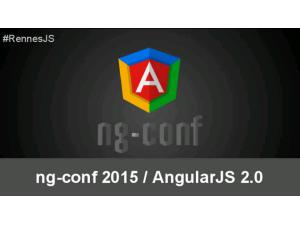- 本月热门
-
 NOSQL七种武器之长生剑,MongoDB的使用介绍 by 成江东@盛大
NOSQL七种武器之长生剑,MongoDB的使用介绍 by 成江东@盛大 -
 技术进化论-献给互联网在中国发展20周年 by 吴华鹏
技术进化论-献给互联网在中国发展20周年 by 吴华鹏 -
 浅淡移动web开发 by 志刚
浅淡移动web开发 by 志刚 -
 Node.js高并发聊天服务实战 by 王文明@360
Node.js高并发聊天服务实战 by 王文明@360 -
 技术选型那些事-轻工厂技术分享 by 潘峰@百度
技术选型那些事-轻工厂技术分享 by 潘峰@百度 -
 JavaScript更好的方面[The Better Parts] by Douglas Crockford
JavaScript更好的方面[The Better Parts] by Douglas Crockford -
 Angular 1.4如何迁移到Angular 2及二者有何不同[英]
Angular 1.4如何迁移到Angular 2及二者有何不同[英] -
 去IOE与数据库高可用性 by 赵振平@太阳塔
去IOE与数据库高可用性 by 赵振平@太阳塔 -
 AngularJS未来发展之路:2.0将启用新域名,1.x版将继续维护直到没人使用
AngularJS未来发展之路:2.0将启用新域名,1.x版将继续维护直到没人使用 -
 JavaScript初级教程
JavaScript初级教程
加收藏
Android is NOT just 'Java on Linux' by Tetsuyuki Kobayashi
第1页
Android is NOT just
'Java on Linux'
2011.5.22 2011.10.26 updated
Tetsuyuki Kobayashi
'Java on Linux'
2011.5.22 2011.10.26 updated
Tetsuyuki Kobayashi
第2页
Let's talk about inside of Android.
http://www.kmckk.co.jp/eng/kzma9/ http://www.kmckk.co.jp/eng/jet_index.html
http://www.kmckk.co.jp/eng/kzma9/ http://www.kmckk.co.jp/eng/jet_index.html
第3页
Who am I?
20+ years involved in embedded systems
10 years in real time OS, such as iTRON 10 years in embedded Java Virtual Machine Now GCC, Linux, QEMU, Android, …
Blogs
http://d.hatena.ne.jp/embedded/ (Personal) http://blog.kmckk.com/ (Corporate) http://kobablog.wordpress.com/(English)
Twitter
@tetsu_koba
20+ years involved in embedded systems
10 years in real time OS, such as iTRON 10 years in embedded Java Virtual Machine Now GCC, Linux, QEMU, Android, …
Blogs
http://d.hatena.ne.jp/embedded/ (Personal) http://blog.kmckk.com/ (Corporate) http://kobablog.wordpress.com/(English)
@tetsu_koba
第4页
Android is NOT just 'Java on Linux'
Android uses Linux kernel. Only kernel.
User land is totally different from usual Linux system.
Android applications are written in Java language.
Class libraries are similar to Java SE but not equal.
Dalvik VM eats only dex code
need to translate from Java byte code in advance
Android uses Linux kernel. Only kernel.
User land is totally different from usual Linux system.
Android applications are written in Java language.
Class libraries are similar to Java SE but not equal.
Dalvik VM eats only dex code
need to translate from Java byte code in advance
第5页
Let's explore inside of Android
Assuming you know Linux and Java very well :)
Assuming you know Linux and Java very well :)
第6页
Today's topic
Android system architecture Init – runtime – Zygoto Dalvik VM Android specific kernel
drivers How to build Android
Android system architecture Init – runtime – Zygoto Dalvik VM Android specific kernel
drivers How to build Android
第7页
Today's topic
Android system architecture Init – runtime – Zygoto Dalvik VM Android specific kernel drivers How to build Android
Android system architecture Init – runtime – Zygoto Dalvik VM Android specific kernel drivers How to build Android
第8页
System architecture
第9页
Java is the first class citizen in Android
Dalvik VM is the center of Android runtime.
Almost all daemon services are written in Java.
Application life cycle is described by Java API
Dalvik VM is the center of Android runtime.
Almost all daemon services are written in Java.
Application life cycle is described by Java API
第10页
Java is the first class citizen in Android
NDK
native library called from Java via JNI This is just a library. Application life
cycle is the same as Java.
Native activity
Only C/C++ to make Apps. (just hidden JNI part into system.)
not short-cut for C/C++
NDK
native library called from Java via JNI This is just a library. Application life
cycle is the same as Java.
Native activity
Only C/C++ to make Apps. (just hidden JNI part into system.)
not short-cut for C/C++
第11页
Typical Directory Tree of Android
/ /(r(orooot)t)
initrd (ro) /s/syysstetemm
/d/daatata /c/caacchhee
ro: mounted as read only rw: mounted as read and write
yaffs2 (ro) yaffs2 (rw)
bin etc lib
usr
yaffs2 (rw)
/m/mnnt/ts/sddccaardrd
removable storage (rw)
cf. Usual Linux system assumes all file system are read/writable.
/ /(r(orooot)t)
initrd (ro) /s/syysstetemm
/d/daatata /c/caacchhee
ro: mounted as read only rw: mounted as read and write
yaffs2 (ro) yaffs2 (rw)
bin etc lib
usr
yaffs2 (rw)
/m/mnnt/ts/sddccaardrd
removable storage (rw)
cf. Usual Linux system assumes all file system are read/writable.
第12页
Today's topic
Android system architecture Init – runtime – Zygoto Dalvik VM Android specific kernel
drivers How to build Android
Android system architecture Init – runtime – Zygoto Dalvik VM Android specific kernel
drivers How to build Android
第13页
Boot sequence
quoted from http://hmtsay.blogspot.com/2010/10/android-startup.html
quoted from http://hmtsay.blogspot.com/2010/10/android-startup.html
第14页
init
located on /init
need kernel boot parameter to add “init=/init”
Static linked. cf. typical linux init is dynamic linked. Doesn't affect even dynamic link system collapsed.
http://blog.kmckk.com/archives/3137191.html
located on /init
need kernel boot parameter to add “init=/init”
Static linked. cf. typical linux init is dynamic linked. Doesn't affect even dynamic link system collapsed.
http://blog.kmckk.com/archives/3137191.html
第15页
Bionic
The standard libraries
libc, libm, pthread, dynamic linker linker has implicit crash dump function
http://kobablog.wordpress.com/2011/05/12/debuggerd-of-android/
Came from *BSD, not glibc Currently, doesn't support C++ exception
and RTTI.
latest NDK supports these by static linking.
The standard libraries
libc, libm, pthread, dynamic linker linker has implicit crash dump function
http://kobablog.wordpress.com/2011/05/12/debuggerd-of-android/
Came from *BSD, not glibc Currently, doesn't support C++ exception
and RTTI.
latest NDK supports these by static linking.
第16页
Prelinking
Locate dynamic link libraries ahead of time.
'apriori' command. Different from 'prelink' command from Red Hat.
Optimized for small embedded system
Allocate fixed address to libraries .
Assume 3GB memory space is large enough to put all libraries together.
Assume not adding/removing libraries.
Locate dynamic link libraries ahead of time.
'apriori' command. Different from 'prelink' command from Red Hat.
Optimized for small embedded system
Allocate fixed address to libraries .
Assume 3GB memory space is large enough to put all libraries together.
Assume not adding/removing libraries.
第17页
Prelink map
build/core/prelink-linux-arm.map
# 0xC0000000 - 0xFFFFFFFF Kernel # 0xB0100000 - 0xBFFFFFFF Thread 0 Stack # 0xB0000000 - 0xB00FFFFF Linker # 0xA0000000 - 0xBFFFFFFF Prelinked System Libraries # 0x90000000 - 0x9FFFFFFF Prelinked App Libraries # 0x80000000 - 0x8FFFFFFF Non-prelinked Libraries # 0x40000000 - 0x7FFFFFFF mmap'd stuff # 0x10000000 - 0x3FFFFFFF Thread Stacks # 0x00000000 - 0x0FFFFFFF .text / .data / heap
# core system libraries
libdl.so
0xAFF00000 # [<64K]
libc.so
0xAFD00000 # [~2M]
libstdc++.so
0xAFC00000 # [<64K]
libm.so
0xAFB00000 # [~1M]
liblog.so
0xAFA00000 # [<64K]
libcutils.so
0xAF900000 # [~1M]
libthread_db.so
0xAF800000 # [<64K]
libz.so
0xAF700000 # [~1M]
libevent.so
0xAF600000 # [jQuery1102045178183920892634_1434503606279?]
libssl.so
0xAF400000 # [~2M]
libcrypto.so
0xAF000000 # [~4M]
libsysutils.so
0xAEF00000 # [~1M]
...
build/core/prelink-linux-arm.map
# 0xC0000000 - 0xFFFFFFFF Kernel # 0xB0100000 - 0xBFFFFFFF Thread 0 Stack # 0xB0000000 - 0xB00FFFFF Linker # 0xA0000000 - 0xBFFFFFFF Prelinked System Libraries # 0x90000000 - 0x9FFFFFFF Prelinked App Libraries # 0x80000000 - 0x8FFFFFFF Non-prelinked Libraries # 0x40000000 - 0x7FFFFFFF mmap'd stuff # 0x10000000 - 0x3FFFFFFF Thread Stacks # 0x00000000 - 0x0FFFFFFF .text / .data / heap
# core system libraries
libdl.so
0xAFF00000 # [<64K]
libc.so
0xAFD00000 # [~2M]
libstdc++.so
0xAFC00000 # [<64K]
libm.so
0xAFB00000 # [~1M]
liblog.so
0xAFA00000 # [<64K]
libcutils.so
0xAF900000 # [~1M]
libthread_db.so
0xAF800000 # [<64K]
libz.so
0xAF700000 # [~1M]
libevent.so
0xAF600000 # [jQuery1102045178183920892634_1434503606279?]
libssl.so
0xAF400000 # [~2M]
libcrypto.so
0xAF000000 # [~4M]
libsysutils.so
0xAEF00000 # [~1M]
...
第18页
Zygote
quoted from http://worms.zoology.wisc.edu/dd2/echino/cleavage/intro.html
quoted from http://worms.zoology.wisc.edu/dd2/echino/cleavage/intro.html
第19页
Zygote
fork
Zygote process
Dalvik VM
clcalcsalssaesssesses
dyncalmcalisacssliesnsek s
libraries
Child process
Dalvik VM
clcalcsalssaesssesses
dyncalmcalisacssliesnsek s
libraries
Dalvik VM
Physical memory space
clcalcsalssaesssesses
dyncalmcalisacssliesnsek s
libraries
(Actually these are mapped by pages.)
fork
Zygote process
Dalvik VM
clcalcsalssaesssesses
dyncalmcalisacssliesnsek s
libraries
Child process
Dalvik VM
clcalcsalssaesssesses
dyncalmcalisacssliesnsek s
libraries
Dalvik VM
Physical memory space
clcalcsalssaesssesses
dyncalmcalisacssliesnsek s
libraries
(Actually these are mapped by pages.)
第20页
Zygote
Zygote process preloads typical (approx. 1800) classes and dynamic link libraries so that childlen start quickly.
Copy-on-write
Only when new process writes page, new page is allocated.
All pages not be written are shared among all zygote children.
Exec system call is not used in zygote.
Exec wipes the page mapping table of the process.
It means exec discards zygote cache.
Zygote process preloads typical (approx. 1800) classes and dynamic link libraries so that childlen start quickly.
Copy-on-write
Only when new process writes page, new page is allocated.
All pages not be written are shared among all zygote children.
Exec system call is not used in zygote.
Exec wipes the page mapping table of the process.
It means exec discards zygote cache.
第21页
UID, GID of Applications
UID(user id) and GID(group id) is used for managing multi-user in usual Linux
system.
Android use this mechanism to isolate applications.
Each application has unique UID.
Can not read/write other application's files.
Zygote is running as UID=0 (root). After
forking child process, its UID is changed
by setuid system call.
UID(user id) and GID(group id) is used for managing multi-user in usual Linux
system.
Android use this mechanism to isolate applications.
Each application has unique UID.
Can not read/write other application's files.
Zygote is running as UID=0 (root). After
forking child process, its UID is changed
by setuid system call.
第22页
Today's topic
Android system architecture Init – runtime – Zygoto Dalvik VM Android specific kernel
drivers How to build Android
Android system architecture Init – runtime – Zygoto Dalvik VM Android specific kernel
drivers How to build Android
第23页
Dalvik VM
executes dex code, which is translated from Java byte code
16bit, register based
cf. Java bytecode is 8bit, stack based
has JIT from Android 2.2 (Froyo)
http://blog.kmckk.com/archives/2691473.html
has concurrent GC from Android 2.3 (Gingerbread)
http://source.android.com/tech/dalvik/
executes dex code, which is translated from Java byte code
16bit, register based
cf. Java bytecode is 8bit, stack based
has JIT from Android 2.2 (Froyo)
http://blog.kmckk.com/archives/2691473.html
has concurrent GC from Android 2.3 (Gingerbread)
http://source.android.com/tech/dalvik/
第24页
Java class libraries
Different from Java ME, which is used in traditional Japanese phone.
Similar to Java SE. But not equal.
Different window/graphics. No AWT, No Swing.
No RMI.
Take care to use user defined class loader
dynamic generated classes doesn't work
because Dalvik VM doesn't eat Java class
files but Dex files.
Different from Java ME, which is used in traditional Japanese phone.
Similar to Java SE. But not equal.
Different window/graphics. No AWT, No Swing.
No RMI.
Take care to use user defined class loader
dynamic generated classes doesn't work
because Dalvik VM doesn't eat Java class
files but Dex files.
第25页
Caveats of NDK programming
Dynamic libraries built by NDK are linked with application process.
forked from Zygote but UID != 0 (root).
consider about permissions.
Don't use fork & exec system calls.
Back ground process should be made as android .app.Service.
Don't use GCC's TLS extension (__thread).
Simple Android dynamic linker does not support it.
java.lang.ThreadLocal is available in Java.
Dynamic libraries built by NDK are linked with application process.
forked from Zygote but UID != 0 (root).
consider about permissions.
Don't use fork & exec system calls.
Back ground process should be made as android .app.Service.
Don't use GCC's TLS extension (__thread).
Simple Android dynamic linker does not support it.
java.lang.ThreadLocal is available in Java.
第26页
3 commands to invoke Dalvik VM
/system/bin/app_process
This is the 'Zygote' process.
/system/bin/dalvikvm
Similar to usual 'java' command. Try 'dalvikvm -h' to show command line help.
/system/bin/dvz
Send request to Zygote process.
See my blog (Sorry in Japanese)
http://blog.kmckk.com/archives/3551546.html
/system/bin/app_process
This is the 'Zygote' process.
/system/bin/dalvikvm
Similar to usual 'java' command. Try 'dalvikvm -h' to show command line help.
/system/bin/dvz
Send request to Zygote process.
See my blog (Sorry in Japanese)
http://blog.kmckk.com/archives/3551546.html
第27页
Today's topic
Android system architecture Init – runtime – Zygoto Dalvik VM Android specific kernel
drivers How to build Android
Android system architecture Init – runtime – Zygoto Dalvik VM Android specific kernel
drivers How to build Android
第28页
Linux kernel
Many common Linux device drivers are available.
Android specific kernel drivers
binder ashmem wake lock logger …
http://elinux.org/Android_Kernel_Features
These source code is not yet merged to kernel main line repository.
Many common Linux device drivers are available.
Android specific kernel drivers
binder ashmem wake lock logger …
http://elinux.org/Android_Kernel_Features
These source code is not yet merged to kernel main line repository.
第29页
Binder
/dev/binder
Base of Inter Process Method Invocation
Not for general purpose. Tuned for specific transaction.
Multi-thread aware
Have internal data per thread (CF. Socket have internal data per fd.)
Doesn't use ”write” and ”read” system calls. Write and read at once by ”ioctl”.
http://blog.kmckk.com/archives/3676340.html
/dev/binder
Base of Inter Process Method Invocation
Not for general purpose. Tuned for specific transaction.
Multi-thread aware
Have internal data per thread (CF. Socket have internal data per fd.)
Doesn't use ”write” and ”read” system calls. Write and read at once by ”ioctl”.
http://blog.kmckk.com/archives/3676340.html
第30页
Ashmem
Android / Anonymous SHared MEMory subsystem
$(TOP)/system/core/cutils/ashmem.h
int ashmem_create_region(const char *name, size_t size) → returns fd
int ashmem_set_prot_region(int fd, int prot) int ashmem_pin_region(int fd, size_t offset, size_t len) int ashmem_unpin_region(int fd, size_t offset, size_t len)
Kernel reclaims not ‘pin’ ed memory
Similar to weak reference of Java. Useful to implement cache.
android.os.MemoryFile from Java program
Android / Anonymous SHared MEMory subsystem
$(TOP)/system/core/cutils/ashmem.h
int ashmem_create_region(const char *name, size_t size) → returns fd
int ashmem_set_prot_region(int fd, int prot) int ashmem_pin_region(int fd, size_t offset, size_t len) int ashmem_unpin_region(int fd, size_t offset, size_t len)
Kernel reclaims not ‘pin’ ed memory
Similar to weak reference of Java. Useful to implement cache.
android.os.MemoryFile from Java program
第31页
Wake lock
Lock to prevent entering sleep mode. My memos
http://blog.kmckk.com/archives/3298375.html http://blog.kmckk.com/archives/3304836.html
eLinux wiki
http://elinux.org/Android_Power_Management
Lock to prevent entering sleep mode. My memos
http://blog.kmckk.com/archives/3298375.html http://blog.kmckk.com/archives/3304836.html
eLinux wiki
http://elinux.org/Android_Power_Management
第32页
Alarm
kernel implementation to support Android's AlarmManager.
Wake up even when it was in sleep mode.
kernel implementation to support Android's AlarmManager.
Wake up even when it was in sleep mode.
第33页
Low memory killer
At the shortage of memory, the kernel select a process seems low priority and kill it. (!!)
It's OK. because specification in the Android application life cycle, application should be preserve its own status.
http://blog.kmckk.com/archives/2795577.html
At the shortage of memory, the kernel select a process seems low priority and kill it. (!!)
It's OK. because specification in the Android application life cycle, application should be preserve its own status.
http://blog.kmckk.com/archives/2795577.html
第34页
Logger
Android has unique system-wide log system
http://blog.kmckk.com/archives/2936958.html http://elinux.org/Android_Logging_System
Android has unique system-wide log system
http://blog.kmckk.com/archives/2936958.html http://elinux.org/Android_Logging_System
第35页
Overview of Android Logging System
JJaavvaapproroggraramm
Target
System.out /System.err
NNaatitviveepproroggraramm
aannddroroidid.u.utitl.ilL.Loogg cocAmonAm.dan.rndaodrniodrdoiPdriodrPiin.driintn.SitntetStrreetnrraaenmlaa.oml.sos
stdout /stderr
User
Kernel
libliblologg
lologgccaat t
stdout aaddbbdd
/dev/log/main /dev/log/radio
/dev/log/event /dev/log/system
main 64KB
radio
event
lologgggeer r
64KB
system
256KB
64KB
/dev/log/main /dev/log/radio /dev/log/event
/dev/log/system
Host DDMS
aaddbbsseervrveer r adb logcat
JJaavvaapproroggraramm
Target
System.out /System.err
NNaatitviveepproroggraramm
aannddroroidid.u.utitl.ilL.Loogg cocAmonAm.dan.rndaodrniodrdoiPdriodrPiin.driintn.SitntetStrreetnrraaenmlaa.oml.sos
stdout /stderr
User
Kernel
libliblologg
lologgccaat t
stdout aaddbbdd
/dev/log/main /dev/log/radio
/dev/log/event /dev/log/system
main 64KB
radio
event
lologgggeer r
64KB
system
256KB
64KB
/dev/log/main /dev/log/radio /dev/log/event
/dev/log/system
Host DDMS
aaddbbsseervrveer r adb logcat
第36页
Today's topic
Android system architecture Init – runtime – Zygoto Dalvik VM Android specific kernel
drivers How to build Android
Android system architecture Init – runtime – Zygoto Dalvik VM Android specific kernel
drivers How to build Android
第37页
How to build Android
All source code is available for download
except Google specific services (Google map, Android market, … )
Easy to download source and build them See AOSP web site
http://source.android.com/
Or, my blog
http://blog.kmckk.com/archives/3722957.html
All source code is available for download
except Google specific services (Google map, Android market, … )
Easy to download source and build them See AOSP web site
http://source.android.com/
Or, my blog
http://blog.kmckk.com/archives/3722957.html
第38页
Conclusion
Android system architecture is totally different from normal Linux systems.
Android uses Linux kernel only, further more, adding android specific kernel drivers.
Designed for Java applications. Tuned for small system.
Android system architecture is totally different from normal Linux systems.
Android uses Linux kernel only, further more, adding android specific kernel drivers.
Designed for Java applications. Tuned for small system.
第39页
Q&A
Thank you for listening! Any comments to blogs are welcome.
Thank you for listening! Any comments to blogs are welcome.
